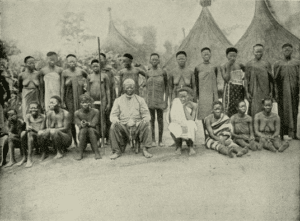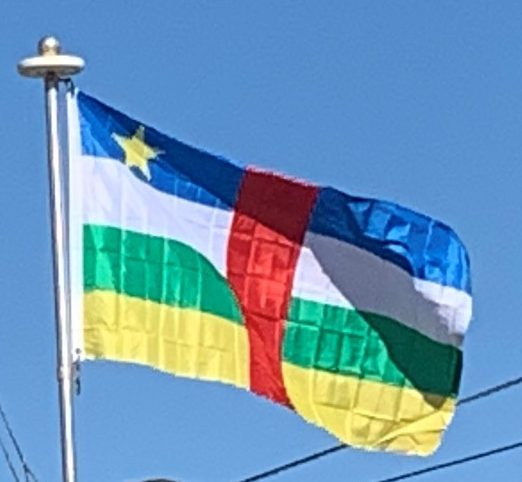The Bouar Megaliths in the western region of the country indicate an advanced level of habitation dating back to the very late Neolithic Era (c. 3500–2700 BC). Ironworking arrived in the region around 1000 BC.

Central Sudanic-speaking people settled along the Ubangi River in what is today Central and East CAR. while Bantoid peoples migrated from the southwest from Cameroon.
Bananas arrived in the region and added an important source of carbohydrates to the diet; they were also used in the production of alcoholic beverages. Production of copper, salt, dried fish, and textiles dominated the economic trade in the Central African region.
16th–19th Century:
During the 16th and 17th centuries slave traders began to raid the region as part of the expansion of the Saharan and Nile River slave routes. Their captives were enslaved and shipped to the Mediterranean coast, Europe, Arabia, the Western Hemisphere, or to the slave ports and factories along the West and North Africa or South the Ubanqui and Congo rivers. In the mid 19th century, the Bobangi people became major slave traders and sold their captives to the Americas using the Ubangi river to reach the coast. During the 18th century Bandia-Nzakara peoples established the Bangassou Kingdom along the Ubangi River. In 1875, the Sudanese sultan Rabih az-Zubayr governed Upper-Oubangui, which included present-day CAR.

French Colonial Period:
The European invasion of Central African territory began in the late 19th century during the Scramble for Africa. Europeans, primarily the French, Germans, and Belgians, arrived in the area in 1885. France seized and colonized Ubangi-Shari territory in 1894. In 1911 at the Treaty of Fez, France ceded a nearly 300,000 km² portion of the Sangha and Lobaye basins to the German Empire which ceded a smaller area (in present-day Chad) to France. After World War I France again annexed the territory. Modeled on King Leopold’s Congo Free State, concessions were doled out to private companies that endeavored to strip the region’s assets as quickly and cheaply as possible before depositing a percentage of their profits into the French treasury. The concessionary companies forced local people to harvest rubber, coffee, and other commodities without pay and held their families hostage until they met their quotas. Between 1890, a year after the French first arrived, and 1940, the population declined by half due to diseases, famine and exploitation by private companies.
In 1920 French Equatorial Africa was established and Ubangi-Shari was administered from Brazzaville. During the 1920s and 1930s the French introduced a policy of mandatory cotton cultivation, a network of roads was built, attempts were made to combat sleeping sickness, and Protestant missions were established to spread Christianity. New forms of forced labor were also introduced and a large number of Ubangians were sent to work on the Congo-Ocean Railway. Through the period of construction until 1934 there was a continual heavy cost in human lives, with total deaths among all workers along the railway estimated in excess of 17,000 of the construction workers, from a combination of both industrial accidents and diseases including malaria. In 1928, a major insurrection, the Kongo-Wara rebellion or ‘war of the hoe handle’, broke out in Western Ubangi-Shari and continued for several years. The extent of this insurrection, which was perhaps the largest anti-colonial rebellion in Africa during the interwar years, was carefully hidden from the French public because it provided evidence of strong opposition to French colonial rule and forced labor.
